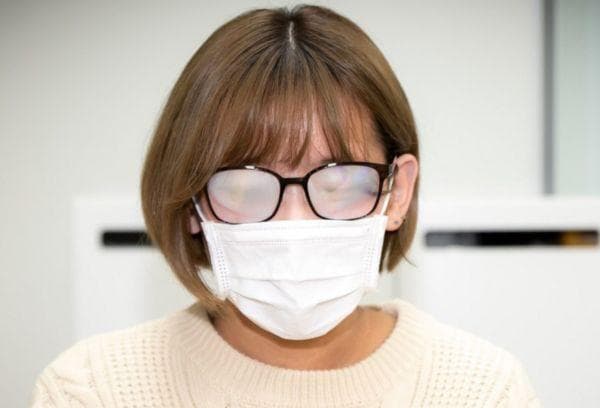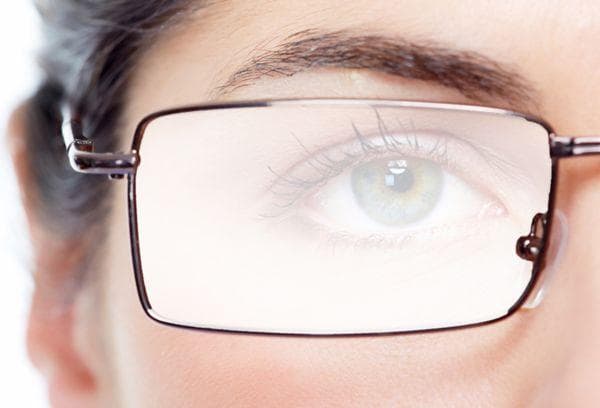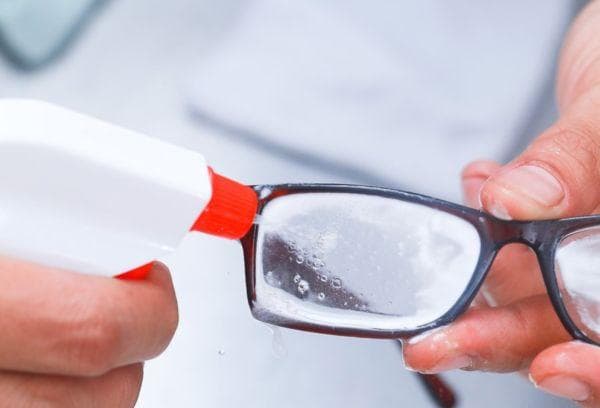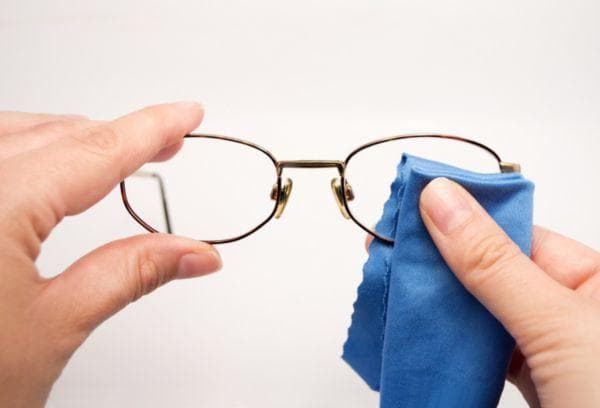What to do to prevent your glasses from fogging up when wearing a mask: 7 ways to eliminate discomfort
In the context of the COVID-19 pandemic, the question of what to do to prevent glasses from fogging up when wearing a mask has become especially relevant. In winter, due to lens fogging, people wearing glasses experience double discomfort. After all, foggy windows reduce the clarity of visual perception. In addition, there is a need to constantly wipe them by touching your face with glasses with your hands. As you know, during an epidemiological situation it is dangerous to do so.

Reasons for glasses fogging
The basis for fogging of glasses when wearing a medical mask is a well-known phenomenon - condensation. Namely, the transformation of a gaseous substance into a liquid state.
A similar process occurs behind the mask:
- exhaled warm, moist air rises;
- the edge of the heated fabric comes into contact with the cold frame of the glasses;
- As a result, the lenses sweat.
A person has to either lower the mask or constantly wipe the windows. Neither one nor the other solves the problem radically. Moreover, such actions become a factor provoking an increase in the risk of infection with a dangerous virus. What to do if your glasses sweat under your mask? Below are the popular and most effective options for preventing glasses from fogging.
Ways to solve the problem
Active discussion of methods is caused not only by the discomfort of lenses fogging up, but also by the increasing danger of infection.Therefore, it is advisable to familiarize yourself with the proposed options for eliminating this annoying problem and choose the most suitable method for yourself:
- Vision without fog. This effect can be achieved by turning the top of the mask inward. This creates a barrier to the penetration of warm exhaled air upward. This eliminates the negative impact of heat on cold frames and glass.
- Dry soap to prevent glasses from fogging up. The method involves applying a few strokes of dry soap to the inside of the lenses. Then the resulting soap traces should be lightly rubbed with your finger over the entire surface of the glass. It should be admitted that the glasses become slightly cloudy, but in the cold they do not fog up and cause less discomfort than without such treatment.
- Using dishwashing detergent or soapy water. This method is similar to the method using dry soap. But its use has its advantages. Dilute dish gel in a small amount of water, then rinse your glasses in the resulting solution and let them dry. After this, wipe with a soft cloth. The essence of the method is the formation of a thin film that reduces surface tension and prevents the appearance of annoying nebulosity. Using regular soap is no less effective. The downside is that it takes a long time to dissolve the product until you get soap foam.
- Plaster or tape. One of the materials is recommended to tightly glue the mask to the face to prevent the penetration of warm air to the glasses. The downside of this method is that it is painful to remove the mask, and a mark from the patch or tape remains on your face.
- Use of sprays and gels. These special products are used by hockey players and motorcyclists against fog.Glasses treated with the spray do not sweat at all. However, the funds are not cheap.
- Breath control. If you learn to direct your breath downward, you can prevent the windows from sweating. You just need to cover your lower lip with your upper lip and direct your exhalation down.
- Glasses with a special coating that prevents condensation. This is the most reliable option, eliminating forever the problem of lenses fogging when wearing a mask.
From the proposed options it is clear that the problem is completely solvable. The main thing is to find the only option that suits you and eliminates the discomfort caused by fogging of the glasses under the mask in the winter.
Answers on questions
Question No. 1. Is it possible to treat glasses with toothpaste to prevent fogging?
Answer. Using toothpaste damages the glass surface as it may contain abrasive components.
Question No. 2. Does lens fogging depend on the tightness of the mask? If yes, what can be done?
Answer. Of course, a loose fit of the fabric to the face leads to the entry of warm air into the glasses, which is the reason for their fogging. Therefore, you need to choose a mask with a sewn-in metal strip that secures the protective mask on the nose. And one more condition: the mask must be selected according to size.
Question No. 3. Which mask shape provides the tightest fit?
Answer. This is a mask made according to a special pattern with a recess for glasses. It consists of two halves, which ensures exceptional tightness of the fabric to the face.
This mask allows you to use an additional sealing method to prevent your glasses from fogging up. It is as follows: first it is recommended to put on a mask, raising it higher on the nose, then glasses.They must be positioned so that they tightly press the areas of the mask located on the cheeks to the face.
Conclusion
On the Internet you can find the most unusual tips on preventing lenses from fogging when wearing a mask. Sometimes they contradict common sense. Here is one of these: “The best method is to spit on the lenses of your glasses and rub the saliva.” Apparently, the author of this advice is far from understanding how unsafe spit-stained glasses can be for those around him during the spread of COVID-19.
Listen to the voice of reason and use methods that provide not only comfort for you, but also the safety of those around you.



